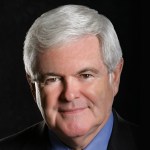Hey everyone, Peter zine here coming to you from the needle I Tuttle on the Rollins pass Railroad, which was one of the three original transcontinental railroad connections in the United States. Railroads are often considered the redheaded stepchild of the transport world, they’re not nearly as fast as planes are not as versatile, they can’t do first and last mile like vehicles, and they don’t have the low operating costs of water doesn’t mean that they don’t have a role, it just means that their roles have to be very geography specific. Now, the reason that this rail line was closed down, it’s because it’s going through the freakin mountains. And unlike the Cheyenne route, or the return route, where they actually you know, go to relatively low passes, this one just goes up, and ultimately peaks out at around 11,000 sheets, that means it’s got a grade of in excess of 2%. And as a rule, every time you increase the the grade by a quarter of a percent, you have to reduce the amount of cargo you can take by half. So the capacity for this line that was started in Denver, and then went up and over to places like Salt Lake and beyond, was just horrible. The economics never made sense. And as a rule, if you live in a flat zone, you know, you’re probably going to use simpler methods of transport. But that doesn’t mean that rail doesn’t have a role. Whenever you’re dealing with things that are relatively large in bulk, and relatively low in value, they make a lot of sense. And unlike rivers that only go where the rivers go, you can choose where the rail line goes, which is that they’re constantly going to be competing with other land based transport like trucks. And so it’s got to be some cheap stuff that you need to move a whole lot of. Now, this line was eventually replaced with the Moffett line, where they really just dug a six, a six mile tunnel straight through the mountains. That’s actually where my Trailhead is today. And in doing so, they get the benefits of the transcontinental with out having to deal with the the sharp slopes. And here is the needle I tunnel from a distance. First thing I thought when I saw this, I was like, Really, this is what it was all about. But remember that we’re talking about the very early stages of the industrial age. And you know, this was built by Americans not German, so it’s not capable of reaching orbit or anything. Anyway, one of the things to keep in mind about rail is if you’re looking to move large volumes of stuff at relative speed, it really is the best for that. But doesn’t necessarily always work for commercial stuff like coal or wheat where timing is less important. But it’s really good for people. So give you a good example, when the trains canceled, this was open, there were two ways that you could get from the eastern part of the United States to the new territories on the Pacific coast, you could do the whole Oregon Trail thing of five to eight months in a wagon. You could spend six months sailing from New York around the entirety of South America and ending up on the west coast, where you get on the rail system and you would be there in nine freakin days. And now from the other side. Let’s see what else can I say about rail? On a level track, you can move cargo for about twice the cost of what you can move it on water for about 1/6 The cost of what you can move it by semi trailer. So if you have the right product in the right place, it makes a big difference. But most people who build rail especially who do it at scale don’t necessarily do it for economic reasons. They do it for political reasons. Because if a region is getting its supplies, and if a region is sending its exports by rail, then whoever controls the rail system tends to have control over that entire community. And this is one of the reasons why the Chinese are so gung ho on rail, it’s not that it’s the most efficient way to do most of what they want to do. But it gives the CCP direct control of the economic destiny of most of the regions in question. And before you judge Chinese too harshly. That is exactly the justification for why the United States built the transcontinental rail system in the first place because without it, we would have never controlled California. Was that a win? Win















Commentary
Our commentary partners will help you reach your own conclusions on complex topics.
‘Easy answer is China’: National security experts discuss gravest concerns
Thursday Dr. Frank Luntz‘Awful’: Americans discuss Congress, Supreme Court, capitalism
Oct 18 Dr. Frank Luntz‘Divided we fall’: Americans discuss concerns for democracy
Oct 10 Dr. Frank Luntz‘That was great’: Undecided voters react to Walz-Vance debate
Oct 4 Dr. Frank LuntzRailroads are more about political power than economic
By Straight Arrow News
Railroads were the engines of progress and transformation throughout the Industrial Revolution. Today, many countries continue using rail systems for both shipping and travel. Yet politics is just as much a part of railroads today as it was in the 1800s.
Straight Arrow News contributor Peter Zeihan says that whoever gains control over vital railway systems similarly gains influence over the communities which depend on those systems. For all of their economic advantages, Zeihan argues, the truest advantages of railroads are political.
Excerpted from Peter’s Sept. 20 “Zeihan on Geopolitics” newsletter:
Today’s video comes to you from Needle’s Eye Tunnel on the Rollins Pass Railroad.
My walk along the railroad tracks inspired some pondering on why rail gets such a bad rap. Yeah, I know it’s not as fast as planes OR as versatile as vehicles OR as cheap as water…but that doesn’t mean there’s no place for it.
The rail conversation comes down to is where and how it is used – i.e., don’t send trains up and over huge mountain passes like the one I’m on. However, most rail lines aren’t really built for “economic” reasons; instead, they are used to project political power over large swaths of land. The U.S. did this with the transcontinental railroad, and the CCP is still doing it today.
While rail might be the redheaded stepchild of the transport industry, it is still very much an integral part of the family.
Hey everyone, Peter zine here coming to you from the needle I Tuttle on the Rollins pass Railroad, which was one of the three original transcontinental railroad connections in the United States. Railroads are often considered the redheaded stepchild of the transport world, they’re not nearly as fast as planes are not as versatile, they can’t do first and last mile like vehicles, and they don’t have the low operating costs of water doesn’t mean that they don’t have a role, it just means that their roles have to be very geography specific. Now, the reason that this rail line was closed down, it’s because it’s going through the freakin mountains. And unlike the Cheyenne route, or the return route, where they actually you know, go to relatively low passes, this one just goes up, and ultimately peaks out at around 11,000 sheets, that means it’s got a grade of in excess of 2%. And as a rule, every time you increase the the grade by a quarter of a percent, you have to reduce the amount of cargo you can take by half. So the capacity for this line that was started in Denver, and then went up and over to places like Salt Lake and beyond, was just horrible. The economics never made sense. And as a rule, if you live in a flat zone, you know, you’re probably going to use simpler methods of transport. But that doesn’t mean that rail doesn’t have a role. Whenever you’re dealing with things that are relatively large in bulk, and relatively low in value, they make a lot of sense. And unlike rivers that only go where the rivers go, you can choose where the rail line goes, which is that they’re constantly going to be competing with other land based transport like trucks. And so it’s got to be some cheap stuff that you need to move a whole lot of. Now, this line was eventually replaced with the Moffett line, where they really just dug a six, a six mile tunnel straight through the mountains. That’s actually where my Trailhead is today. And in doing so, they get the benefits of the transcontinental with out having to deal with the the sharp slopes. And here is the needle I tunnel from a distance. First thing I thought when I saw this, I was like, Really, this is what it was all about. But remember that we’re talking about the very early stages of the industrial age. And you know, this was built by Americans not German, so it’s not capable of reaching orbit or anything. Anyway, one of the things to keep in mind about rail is if you’re looking to move large volumes of stuff at relative speed, it really is the best for that. But doesn’t necessarily always work for commercial stuff like coal or wheat where timing is less important. But it’s really good for people. So give you a good example, when the trains canceled, this was open, there were two ways that you could get from the eastern part of the United States to the new territories on the Pacific coast, you could do the whole Oregon Trail thing of five to eight months in a wagon. You could spend six months sailing from New York around the entirety of South America and ending up on the west coast, where you get on the rail system and you would be there in nine freakin days. And now from the other side. Let’s see what else can I say about rail? On a level track, you can move cargo for about twice the cost of what you can move it on water for about 1/6 The cost of what you can move it by semi trailer. So if you have the right product in the right place, it makes a big difference. But most people who build rail especially who do it at scale don’t necessarily do it for economic reasons. They do it for political reasons. Because if a region is getting its supplies, and if a region is sending its exports by rail, then whoever controls the rail system tends to have control over that entire community. And this is one of the reasons why the Chinese are so gung ho on rail, it’s not that it’s the most efficient way to do most of what they want to do. But it gives the CCP direct control of the economic destiny of most of the regions in question. And before you judge Chinese too harshly. That is exactly the justification for why the United States built the transcontinental rail system in the first place because without it, we would have never controlled California. Was that a win? Win
Hurricane Helene hits US coast, Appalachia and beyond
Israel holds upper hand against Lebanon, Hezbollah and Iran
The Sinaloa Cartel civil war
New Ukrainian weapons hit Russia where it hurts
Weighing social costs vs. economic benefits on immigration
Underreported stories from each side
Montana Dem Operative Caught Tampering With Ballot Box
24 sources | 0% from the left Getty ImagesHalf of Americans see Donald Trump as a fascist: ABC News/Ipsos poll
15 sources | 0% from the right ReutersLatest Stories
CNN faces defamation trial over Afghanistan evacuation report
Self-driving vehicle company Waymo gets $5.6B to expand, despite challenges
Massive fire at US base in South Korea extinguished after 19 hours
Dodgers-Yankees World Series matchup the more classic kind of ‘moneyball’
Federal judge orders Virginia to restore more than 1,600 voter registrations
Popular Opinions
In addition to the facts, we believe it’s vital to hear perspectives from all sides of the political spectrum.
When cornered, Harris turns to ‘word salad’ or untruths
Friday Star ParkerTrump’s McDonald’s play proves no substance in his policies
Friday Dr. Rashad RicheyThe case against TikTok
Thursday Jordan ReidSinwar’s death a good thing for both Israel and America
Wednesday Newt Gingrich